
Landscape Renovation San Diego: Transform Your Yard Today
September 23, 2025
The Best Landscape Contractor in San Diego Breceda Landscape
October 6, 2025Did you know San Diego experiences less than 5 inches of rain during winter, making it one of the driest seasons for local gardens? While most gardeners think of winter as a time of rest or hibernation, in San Diego the real challenge begins: how to keep your winter garden productive without reliable rainfall. If you’ve ever found your vegetable garden wilting or your growing season cut short by dry conditions, you’re not alone. In this comprehensive guide, you’ll discover how to adapt, innovate, and even thrive when winter weather is working against your green thumb.
What You’ll Learn About Dry Winter Gardening
- Strategies for successful dry winter gardening
- How to extend your winter garden growing season
- Vegetable gardening techniques for San Diego’s dry winters
- Best tools and protective structures: cold frame, hoop house, row cover, and more
- Choosing drought-tolerant crops for your winter garden

Dry Winter Gardening: The Surprising Challenge in San Diego
With its mild temperatures, many assume San Diego winters are easy for gardening. Yet, the reality can be harshly different: little rainfall, dry winds, and rapid soil drying can leave even seasoned gardeners frustrated. Many find traditional methods—like frequent watering or mulching—are not enough to keep their winter garden vibrant. Visible signs such as drooping leafy greens, cracked garden beds, and stunted root development serve as reminders of why intelligent planning for dry winter gardening is crucial. Strategic use of techniques like cold frames, row cover, and the selection of drought-resistant crops becomes the line between thriving and simply surviving.
“San Diego’s winter droughts make traditional gardening challenging; intelligent planning is no longer optional—it’s necessary.” – Local horticulture expert

Understanding Dry Winter Gardening in San Diego
- Local climate overview
- Water scarcity and its impacts on winter garden planning
- Soil characteristics for dry season gardening
Dry winter gardening in San Diego is shaped by unique environmental conditions. Winters bring mild but dry weather, with rare rainfall and increased risk of water scarcity. The soil, often sandy and quick to drain, struggles to retain moisture, making it difficult for vegetables and root crops to thrive without intervention. Unlike regions facing bitter cold and snow, San Diego gardeners battle persistent aridity that stifles growth and accelerates soil depletion. Understanding this climate’s limitations is the first step to designing a resilient, productive winter garden. With the right preparation, even novice gardeners can adapt their growing season approach to San Diego’s challenging winters.
Season Extension Techniques for Dry Winter Gardening
Smart gardeners know that using season extension tools like cold frames, hoop houses, and row covers can add weeks to your growing season, protect your vegetable garden from frost and dry winds, and help you cultivate a broader range of leafy greens and root vegetables. These structures create microclimates by trapping warmth and limiting water loss, even when seasonal rainfall is absent. For dry winter gardening, the careful selection and maintenance of these protective structures can be the difference between a garden that struggles and a garden that thrives.

Using a Cold Frame in Your Winter Garden
A cold frame is a simple structure—usually a transparent cover over a low box—that captures solar energy and preserves warmth for seedlings and cold-tolerant crops. In dry winters, a cold frame serves double duty: it guards against night chill while conserving soil moisture by limiting evaporation. To get the most from your winter gardening effort, position your cold frame in a spot with full sun and line the sides with straw or mulch for additional insulation. Regularly vent the frame during sunny days to prevent overheating, but close it tightly at dusk to trap warmth. With a cold frame, you can extend your growing season by several weeks and coax tender greens or early carrots through the winter months despite minimal rainfall.
Building a Hoop House for Dry Winter Gardening
A hoop house is a versatile option for gardeners looking to scale up from cold frames. Built using hoops of PVC or metal covered by clear plastic, these structures shelter bigger garden beds and enable you to grow rows of vegetables—think swiss chard, carrots, and even root vegetables—without fear of wind or drought. The protected space inside maintains higher humidity and shields against both frost and water loss. Assembly is straightforward, requiring minimal tools and materials, and with proper anchoring, a hoop house will withstand San Diego’s dry winter breezes. By combining a hoop house with mulching and drip irrigation, you gain consistent crops from your winter garden even during extended dry spells.
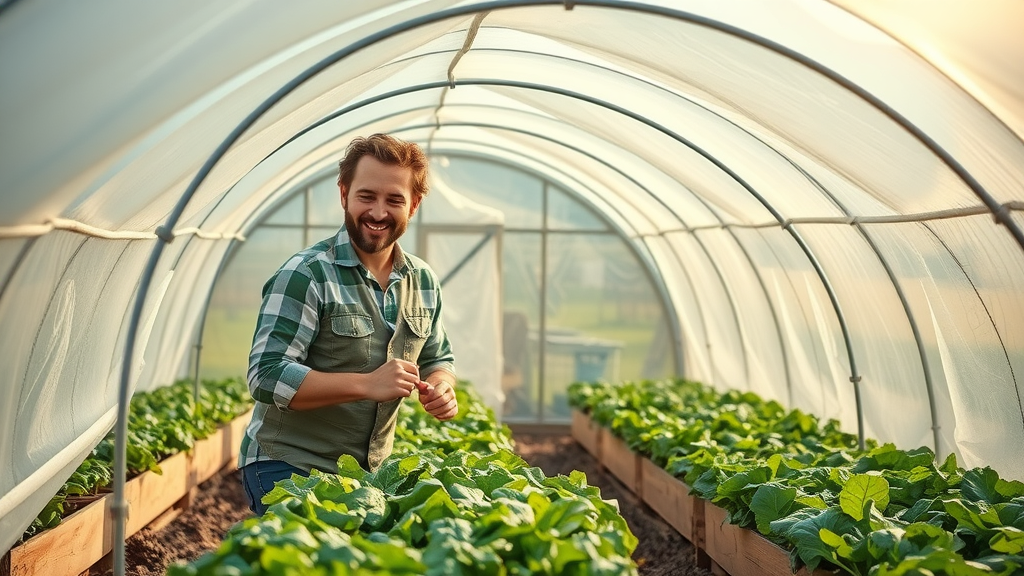
Row Cover Techniques for Dry Winter Gardening
Row covers are lightweight fabrics—often called frost cloth—that float above plants, providing an extra layer of insulation. They’re a favorite for dry winter gardening, as they block drying winds, conserve soil moisture, and shield crops from surprise frosts without breaking the bank. Lay a row cover directly on top of leafy rows or use hoops to create a low tunnel, securing the edges with soil or stones to keep out cold air. With row covers, even delicate vegetables have a chance to thrive. For maximum impact in your vegetable garden, use row covers over newly seeded beds and young seedlings, ensuring you’ll have fresh produce deep into winter.
| Tool/Structure | Key Benefits | Typical Installation Cost | Optimal Crops |
|---|---|---|---|
| Cold Frame | Preserves warmth, reduces evaporation, great for seedlings or small greens | $50-$100 (DIY) | Leafy greens, herbs, baby carrots, start seeds indoors |
| Hoop House | Protects large garden beds, increases yield, controls humidity | $100-$500 (DIY/kit) | Root vegetables, swiss chard, kale, winter lettuce |
| Row Cover | Affordable, easy to install, shields against wind and frost | $15-$40 (per 100 ft) | Seedlings, leafy greens, root crops |
Selecting Drought-Tolerant Crops for Your Vegetable Garden
- Best varieties for dry winter gardening
- Yields and water requirements
- Planting calendars for winter gardening in San Diego
Selecting drought-tolerant varieties is one of the most important steps in a dry winter garden. Choosing crops that not only survive but flourish in low-moisture conditions will save water, reduce maintenance, and ensure a steady supply of fresh produce. In San Diego, certain root vegetables and leafy greens—like kale and swiss chard—excel during winter with minimal irrigation. Knowing each crop’s needs, from soil depth to frost sensitivity and watering frequency, ensures your vegetable garden maintains both yield and health despite seasonal drought.
- Top Drought-Tolerant Vegetables for Dry Winter Gardening:
- Kale
- Swiss Chard
- Fava Beans
- Carrots
- Beets
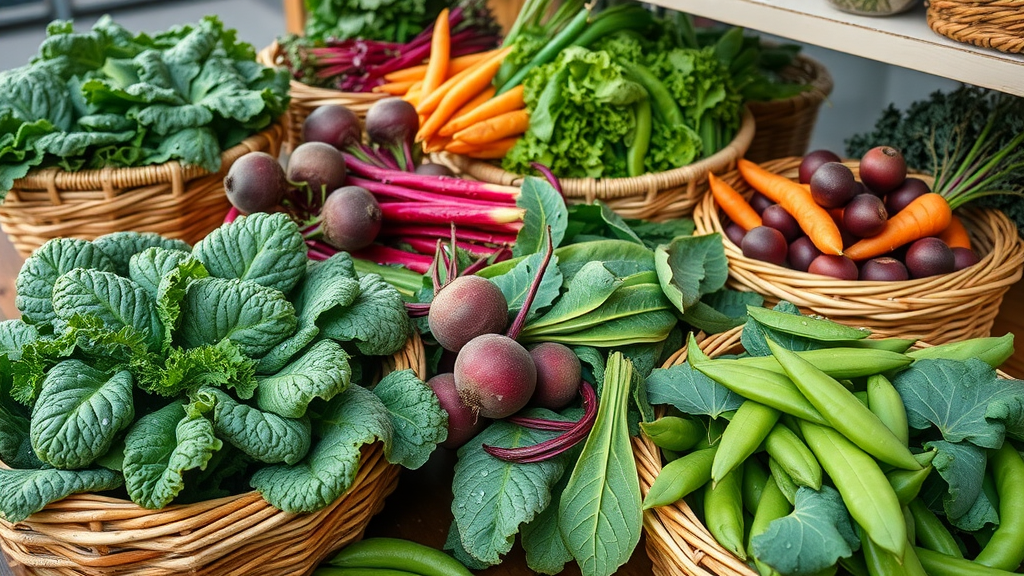
Soil Preparation for Dry Winter Gardening
The foundation of dry winter gardening success is healthy, moisture-retaining soil. San Diego gardens often suffer from sandy or decomposed granite soils that lose water rapidly. Replenish your garden beds each fall by mixing in composted organic matter, which increases the soil’s ability to store water and nutrients. A thick layer of mulch—such as straw or shredded leaves—insulates soil, minimizes water loss, and stabilizes temperature for roots. Proper soil structure, enhanced by organic amendments, makes a dramatic difference in how much you need to irrigate your winter garden. Regularly check for compaction and aerate where necessary to promote strong root development and resilient vegetable gardening during the driest months.
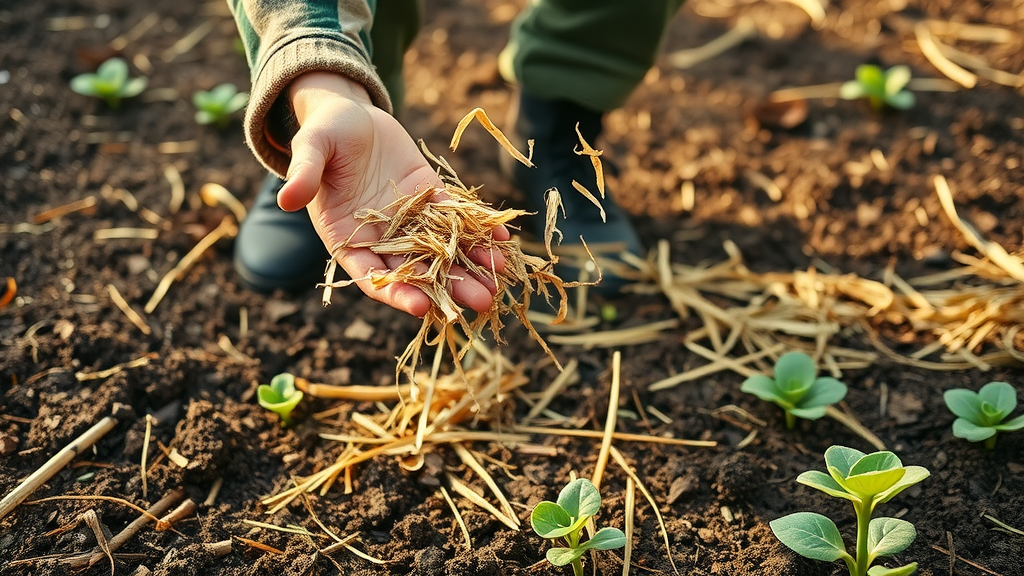
Water-Wise Irrigation for Effective Winter Gardening
- Drip irrigation systems
- Scheduling tips for reducing water waste
- Watering frequency for optimal vegetable garden results
- How mulch conserves soil moisture
When water is scarce, drip irrigation becomes a game-changer for dry winter gardening. Unlike overhead sprinklers, drip lines deliver moisture directly to plant roots with unmatched efficiency, minimizing evaporation and runoff. Schedule your watering in the early morning to further limit water loss and help plants start the day well-hydrated. Adjust your irrigation schedule based on recent rainfall, plant size, and soil conditions—overwatering can be just as damaging as drought, especially for root crops. Combine irrigation with a thick mulch layer to slow soil drying and reduce watering frequency, ensuring your winter garden remains lush with minimal wasted water.
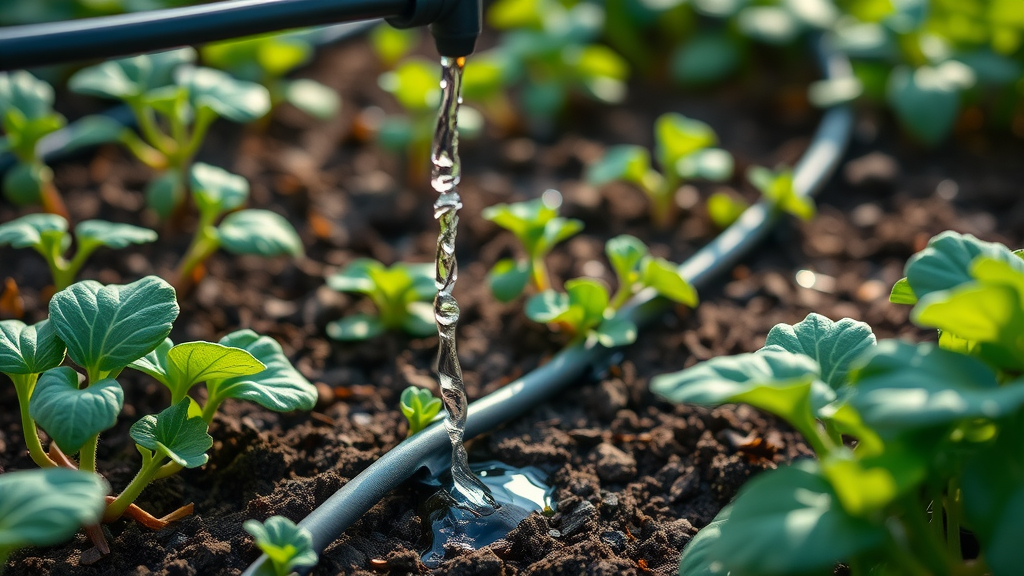
DIY High Tunnel and Low Tunnel Construction
- Materials needed for a high tunnel
- Assembly steps
- Planting tips for using tunnels
High tunnels and low tunnels are cost-effective, customizable solutions for extending San Diego’s growing season. To construct a basic high tunnel, gather metal or PVC pipe, heavy clear plastic, and sturdy fasteners. Secure the frame over your garden bed, cover with plastic sheeting for insulation, and anchor the sides well to prevent wind damage. These tunnels trap warmth and humidity, accelerating growth for both leafy greens and root vegetables. For low tunnels, use shorter hoops and lighter plastic or frost cloth, providing quick coverage against nighttime freezes. With either structure, monitor humidity and temperature, vent on sunny days, and provide consistent moisture at the root zone for best results.
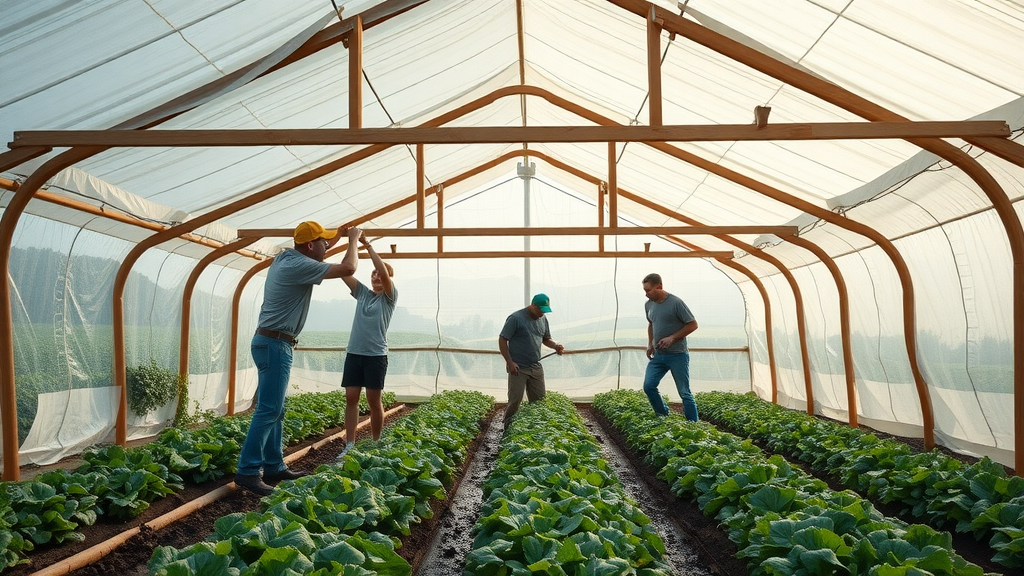
Starting Seeds Indoors for Dry Winter Gardening
Sometimes the best way to extend your growing season in a dry winter is to get a head start by starting your seeds indoors. A sunny window or grow lights offer a nurturing environment for young plants when the outdoor garden bed is too cold or dry for germination. Use quality seed-starting mix and trays, keeping the soil just moist—not soggy—to avoid fungal issues. Harden off seedlings by gradually exposing them to outdoor conditions before transplanting into the prepared garden beds, or directly under a cold frame or row cover. This simple strategy ensures robust transplants for your winter garden, providing a seamless transition from indoor trays to thriving outdoor beds.

San Diego Landscape Renovation Strategies for Dry Winters
- Key renovation ideas:
- Permeable paving
- Xeriscaping
- Rainwater catchment systems
- Low-water irrigation technology
Renovating your landscape for a dry San Diego winter goes beyond planting the right crops. Integrate permeable paving to allow rainwater to soak into your soil rather than run off wasted. Embrace xeriscaping by replacing thirsty turf with native drought-tolerant plants and mulch beds that require minimal irrigation. Install a simple rainwater catchment system to harvest every drop of winter rain, stretching water supplies for vegetable gardens and ornamental beds alike. Finally, explore low-water irrigation technologies such as drip lines and moisture sensors for ultimate efficiency. These strategies future-proof your garden, ensuring both productivity and sustainability during even the driest winters.

Best Practices for Managing Pests in Dry Winter Gardening
Pest management in dry winter gardening requires vigilance despite cooler temperatures and lower humidity. Dehydrated conditions can actually stress crops, making them more susceptible to aphids, mites, and beetles looking for moisture. Use natural barriers such as row covers to physically block insects while conserving soil moisture. Introduce beneficial predators—like ladybugs—and avoid broad-spectrum insecticides, which can harm pollinators and beneficial soil microbes. Regular inspections and prompt removal of pests keep your winter garden healthy. Organic controls, such as neem oil or insecticidal soap, are effective for spot treatments, and mulching around plant bases deters crawling pests while locking in moisture.
Common Dry Winter Gardening Mistakes to Avoid
- Overwatering or underwatering
- Neglecting soil structure
- Planting inappropriate winter crops
- Poor use of season extension tools
Many dry winter gardening problems stem from simple mistakes. Overwatering can drown roots in poorly draining beds, while underwatering in sandy soils leads quickly to drought stress. Always check moisture at the root zone before watering and adjust frequency to local rainfall and temperature. Neglecting soil structure makes it hard for roots to access both air and nutrients, so prioritize organic matter and aeration. Planting crops that can’t handle dry winter conditions—or failing to use tools like cold frames or hoop houses—will result in disappointing harvests and wasted effort.
- Quick Fixes for Common Mistakes:
- Use a soil moisture meter to avoid guesswork
- Top off garden beds with compost at the start of each season
- Select only proven drought-tolerant crops for winter plots
- Repair and maintain all season extension structures before planting
Local Resources and Community Support for Winter Gardeners
San Diego’s gardening community is a treasure trove of support for anyone striving to master dry winter gardening. Local extension offices, master gardener programs, and garden clubs offer workshops, seed swaps, and expert advice tailored to this unique climate. Online forums and social media groups provide year-round troubleshooting and can help connect you with shared tool libraries or discounted bulk compost. Don’t go it alone—tapping into local knowledge accelerates your learning curve and boosts both your confidence and results in your winter garden.
People Also Ask: Dry Winter Gardening Questions
What is the 3 year rule in gardening?
The “3 year rule” in gardening suggests that perennial plants (such as fruit bushes or some root vegetables) may take three years to fully establish before producing optimal harvests. During year one, plants are focused on root development. In the second year, they put on a lot of vegetative growth but limited fruit or crops. By the third year, with established roots and structure, yields typically reach their peak. Patience with this rule ensures healthy, resilient plants—especially important in dry winter gardening where roots must tap deep water reserves.
Is October too late to start a garden?
In San Diego, October is not too late to start a winter garden. In fact, mild autumn weather provides a perfect window to sow crops like kale, swiss chard, beets, and carrots. Starting seeds indoors or under a cold frame accelerates growth and protects young plants from early cold snaps. Just plan your planting calendar around your area’s first frost date and utilize season extension tools as needed.
What’s the best thing to plant in September?
September is the ideal time to plant drought-tolerant leafy greens such as kale and swiss chard, as well as root vegetables like carrots and beets for your dry winter garden. These crops establish quickly during the last warm days of fall and mature over the winter, especially when protected with a row cover or hoop house. Refer to planting calendars tailored for San Diego to maximize success.
What vegetable needs the least amount of water to grow?
Of all common winter vegetables, fava beans and kale are notably resistant to drought, performing exceptionally well under minimal irrigation in a winter garden. Both crops have deep roots that mine the lower soil for water, making them ideal for anyone practicing dry winter gardening in arid climates like San Diego.
FAQs: Dry Winter Gardening in San Diego
- How often do I need to water my vegetable garden in the winter?
Check garden bed moisture every few days; water deeply once or twice a week, as needed, prioritizing root zones over leaf surfaces. - What’s the best mulch for moisture retention during dry winter gardening?
Organic mulches like straw, shredded leaves, or composted bark offer excellent moisture retention and break down to feed your soil. - Can I create a hoop house with simple household materials?
Yes! Flexible PVC pipes or wire hoops, plastic sheeting, and sturdy clips are all you need for an effective DIY hoop house. - Should I fertilize when practicing dry winter gardening?
Yes, but use slow-release organic fertilizers and focus on soil amendments at planting time; avoid overfeeding, which can stress drought-sensitive crops. - How do I keep pests away naturally?
Use physical barriers (like row covers), companion planting, attracting beneficial insects, and practicing regular hand-picking to manage pests safely.
Key Takeaways for Dry Winter Gardening Success
- Effective dry winter gardening requires tailored crop selection
- Season extension tools like cold frames, hoop houses, and row covers are indispensable
- Water conservation and soil health are foundational
- A strong community network offers vital ongoing support
Conclusion: Embrace Next-Level Dry Winter Gardening
Adapting your strategies for San Diego’s dry winters empowers your winter garden to flourish; use these expert methods and start your season strong.
Transform Your Landscape for a Dry Winter: Contact a Landscape Contractor
Ready for a resilient, beautiful landscape this winter? Contact a trusted San Diego landscape contractor for expert design and renovation to make your dry winter gardening success a reality.
Sources
- https://www.sdge.com – SDG&E: Climate Data
- https://mastergardener.ucanr.edu – UC Master Gardener Program
- https://sandiegoseedcompany.com – San Diego Seed Company
- https://brecedalandscape.com – Breceda Landscape
To enhance your understanding of dry winter gardening, consider exploring the following resources:
- “11 Drought-Tolerant Plants That Can Grow Through Fall And Winter” (thegardenmagazine.com)
This article provides a curated list of plants that thrive in dry winter conditions, offering insights into their characteristics and care requirements.
- “Dryland Farming” (en.wikipedia.org)
This resource delves into agricultural techniques for non-irrigated cultivation in areas with limited rainfall, offering strategies that can be adapted to home gardening.
If you’re serious about optimizing your garden for dry winter conditions, these resources will provide valuable insights and practical tips to help you succeed.

